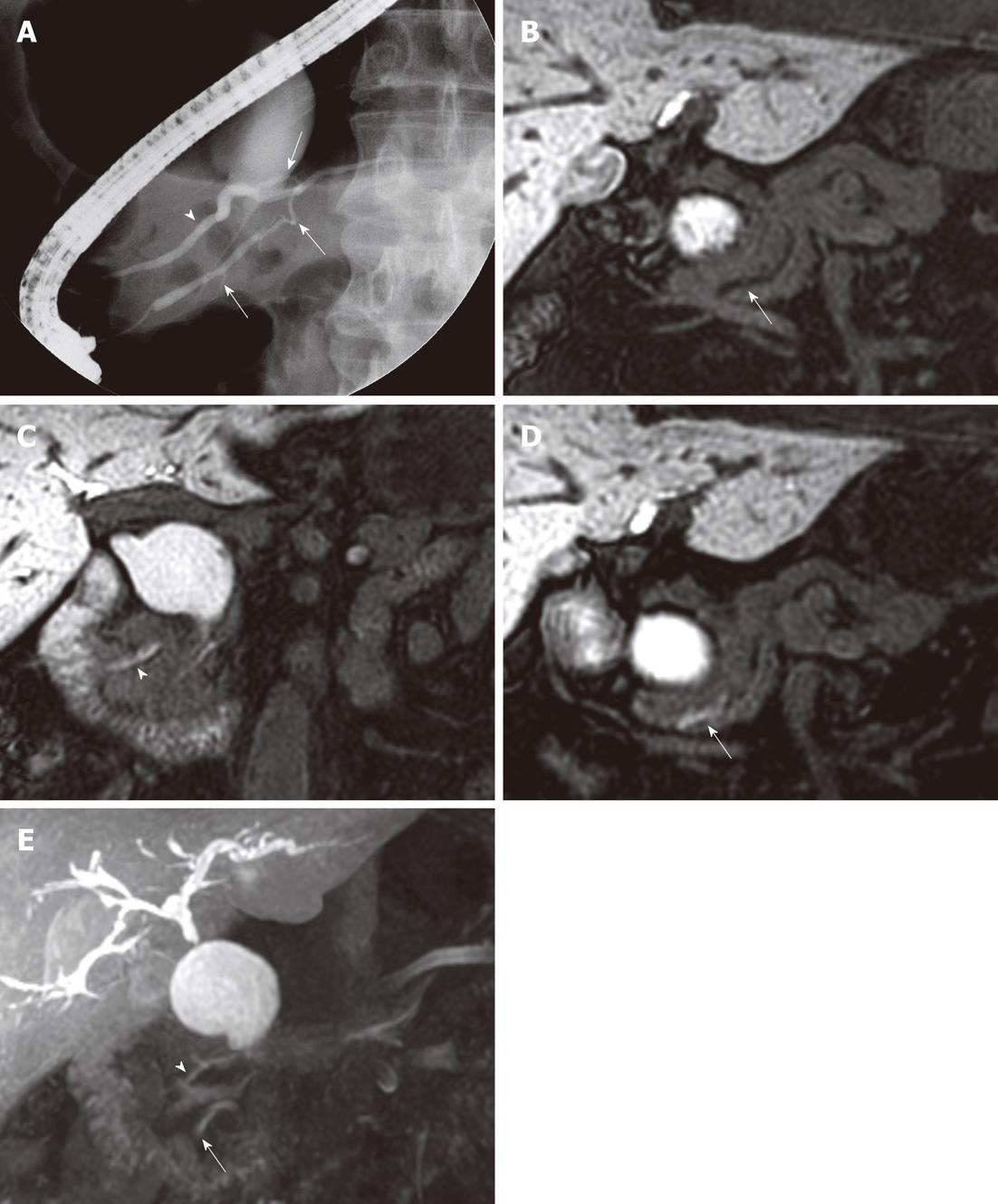Copyright
©2012 Baishideng Publishing Group Co.
World J Gastroenterol. Mar 7, 2012; 18(9): 952-959
Published online Mar 7, 2012. doi: 10.3748/wjg.v18.i9.952
Published online Mar 7, 2012. doi: 10.3748/wjg.v18.i9.952
Figure 2 A 64-year-old man with anomalous union of the pancreatico-biliary duct and a type Ia choledochal cyst.
A: Endoscopic retrograde cholangiopancreatography shows cystic dilation of the extrahepatic bile duct with a focal stricture in the distal common bile duct. The end of the long ventral pancreatic duct (duct of Wirsung, arrows) is fused with the dorsal pancreatic duct (duct of Santorini, arrowhead). The common bile duct inserts into the ventral pancreatic duct; B: Sixty-minute delayed gadoxetic acid-enhanced magnetic resonance cholangiography (MRC) coronal image does not visualize the main pancreatic duct (arrow); C and D: Gadoxetic acid-enhanced MRC coronal images taken 30 min after a fatty meal show the duct of Santorini (arrowhead) and duct of Wirsung (arrow), indicating biliopancreatic reflux of contrast material; E: Gadoxetic acid-enhanced MRC maximum intensity projection reconstruction images taken 30 min after a fatty meal show major and minor pancreatic ducts.
- Citation: Yeom SK, Lee SW, Cha SH, Chung HH, Je BK, Kim BH, Hyun JJ. Biliary reflux detection in anomalous union of the pancreatico-biliary duct patients. World J Gastroenterol 2012; 18(9): 952-959
- URL: https://www.wjgnet.com/1007-9327/full/v18/i9/952.htm
- DOI: https://dx.doi.org/10.3748/wjg.v18.i9.952









